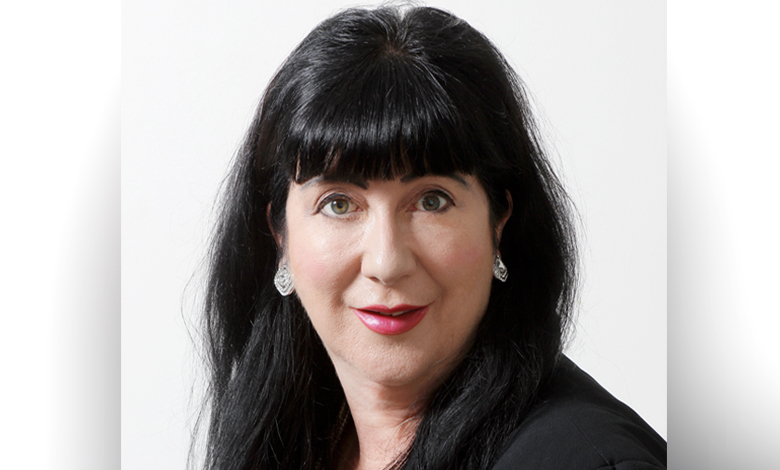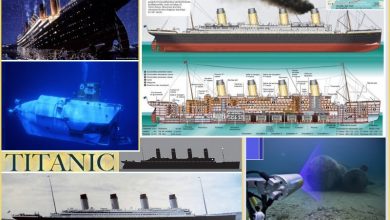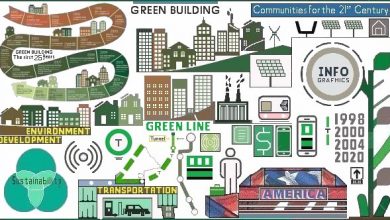
Internationally Experienced Director – Senior Executive – Trusted Board Advisor – Value Chain Business Transformation & Performance Improvement Specialist
Tier One Multinational Enterprises across Diverse Industries
Lisa’s focus is on formulating and facilitating supply chain solutions that address yesterday’s issues of reactivity, uncompetitive delivered cost and lead times, poor delivery performance, excessive waste, lack of transparency, silo’d operations, poor data mgt and cost centre mindsets.
Lisa works with organisations across a diverse range of sectors and industries to devise and embed creative, innovative and uniquely customised solutions that prepare organisations to address tomorrow’s issues. This is achieved by anticipating and embracing disruption, applying new technologies, including digital, creating new channels, collaborating, delivering end-to-end transparency, transitioning to a demand driven, profit centre of excellence and a key deliverer of strategic value to the customer.
As a director, advisor and consultant to numerous corporations globally, Lisa and her team have added many billions of dollars in value. Lisa currently works with many new technologies, including big data, collaborative technologies, AI, robotics, renewables and block chain.
What attracted you most to be a part of the Supply Chain Management Industry?
This is quite a funny story as I look back.
I worked with E.I.Du Pont at the highest levels supporting the chairman of Asia Pacific with building a strategy for the AP region which was being recognised as an engine of growth for Du Pont globally. This was a major change for the organisation, as AP in the past had been categorised as opportunistic and it was now moving to strategic. This involved working out what Du Pont would look like in Asia pacific and how it would go about growing the business in the region. Du Pont in those days consisted of 37 businesses in hundreds of countries around the world.
As my work in Japan was coming to an end, I was given an assignment to resolve major issues that we had in the Printing and Publishing and medical businesses relating to the production, finishing and distribution of film used in the Graphic arts and X-ray medical businesses.
The funny part is that I was asked twice by the Chairman of AP as he was at the time, and soon to be global CEO and global chairman, to take on this role and turned him down twice. I was perfectly happy working and living in japan, and jetsetting around the world, and Australia was the last place I wanted to go.
I was taken aside by a very senior global business leader who explained to me that no one ever turned Chad, the chairman down when he was offering them a new role, a promotion at that and could I please reconsider so that when he asked me to take this role a third time, could I please accept the new role.
I was appointed as business manager, in the business dealing with a global supply chain, which had original manufacturing in Neuisenburg in Germany and United States, and had finishing plants in Tokyo, japan and Sydney, Australia. Interestingly the business had a major issue with deliveries into Asia Pacific (exc Japan and Australia).
This was before they even had supply chain managers, but fixing the supply chain was my responsibility.
This role was one of the most interesting and exciting that I had, and the results of this work were extraprdinary. (I soon left Australia again bound for the US,to work again for the senior leadership team, the chairman of AP, was now CEO and chairman of the entire co, so it was wise to agree to this role despite my initial misgivings.)
One evening when I was in the office working late, I had an epiphany. My global colleagues, who were all totally committed to their roles, I knew would have done their best, worked hard and gone home the evening before thinking that all was well. Yet, here I was , in an office, at 10.30pm, on the other side of the planet, trying to work out why our customers still had not received their products. This was when I realised that delivering on functional goals was never going to work to meet customer needs, because essentially every function could meet their goals and still customers could not be serviced…. How could this be?
This was when I realised that something more was needed, and this something more was a single point of focus on meeting the needs of customers and that this goal needed to be included in each of the functional silos measurable objectives.
In Du Pont in those days we had a globally agreed and understood organisational culture which enabled interactions, We also had a matrix structure so the businesses focused on meeting their objectives and the countries focussed on meeting theirs. Sure this caused conflict but it was healthy conflict because ultimately everyone wanted customers serviced. Still something was falling through the cracks!
Unfortunately, for this particular problem, the resolution needed to go right back to the global planning, even before the global manufacturing. My work involved documenting, understanding and correcting the entire end to end process across the business, complete with responsibilities and accountabilities for each person within the process.
The processes that I documented were the product flow, information flow, financial flow, value creation(destruction) flow and risk flow with special focus on the handover or grey areas between functional silos.
When the process was implemented, the supply chain worked. Of course, we had a process for continuous improvement to the process, so it was continually being refined.
My role did not end there. Of course once we had the supply chain working there was always the next challenge of improving that performance and that led us into the world of supply chain planning and optimisation.
The results were quite extraordinary and the process that I used was used as a prototype for the rest of the supply chains across Du Pont globally.
The Du Pont business that I was in, was sold, and I then moved to a new organisation Coca Cola Amatil.
We used ops research tools in those days to model the end to end supply chain and reimagine, based on demand, what the supply chain needed to look like for 3-5 years hence across the Asia Pacific region.
(Today our planning horizons need to be much shorter.)
We came up with several different scenarios which went to the board. They selected their preferred scenario based on a combination of delivered cost, cash flow and return on invested capital, with of course the outcome, optimal delivered cost for the perfect order for the ideal state. Once they selected their preferred option, we set about rebuilding the supply chain to be fit for purpose for that industry and our AP customers. This was extraordinary work in extraordinary times. And again delivered extraordinary results.
What are the major KPI’s for the Supply Chain you have encountered cross-functionality between Logistics, warehousing, Procurement and Demand & Planning forecasting?
Supply Chain kpis’s are really important.
At the highest level we are requiring so much from our supply chains. These days they need to be safe, secure, resilient, optimised, cost effective, efficient and fit for purpose. And then perfect in their operation. (And let me tell you this is a nirvana, that is never achieved.)
We all want to be part of a business that is growing(knows their customers and what they want now and what they are going to want in the future), has a handle on their costs,(but drives profitability), manages their cash well (so cares about inventory, inv turns and even cash to cash cycle time) and provides a return on invested capital that’s better than a bank.(in whatever economic environment we operate in so we can attract investor funds.)
Importantly, we want to be part of a business that adds value and lots of it and gets paid handsomely for the value it adds, so we always need to have a handle on value added(and destroyed.)
Additionally, though, I really like Lora Cecere’s take on KPI’s in her extraordinary work on ‘Supply Chains to admire’’(1) The kpis that she uses for value are Market capitalisation and price to tangible book value vs peers over time.
I really like the idea of being able to link the work we do in supply chain to the profit and loss statement and the cash flow statement so that we can measure the impact of supply chain on the current and future value of the business.
At the operational level we have a plan that the supply chain is trying to fulfil, and really this plan should be delivering the target outcomes for each of the above categories so this means that the critical kpi becomes performance to plan (presuming that the plan reflects the ideal state for the perfect order for that level of infrastructure.)
In terms of cross functional KPI’s, this is where the process work really kicks in. So then the question becomes what does the perfect order for the end to end supply chain look like and how does this compare with the ideal state.
Functional leaders can control what happens within their functions, but who controls what happens in the grey area between functions? No one, so this where a process can, does and will fail if there isn’t a clear failsafe option in place to ensure that the grey area is covered in the 1st place. The only way that I know to monitor these areas is to monitor performance to process, (or perfect order status) and report on what happened that was outside the process,(deviation from perfect order) so that eventually the teams are programmed to do what the process says and nothing else until there is a change in the programme, or we have a technological solution. Let me try to explain:
-
- Between functions we need clear handovers with timing and back-ups. Sounds simple enough.
- Warehousing and logistics: For example: when product is loaded onto a truck, the warehouse looks after loading but logistics is now responsible for the load. If the load is incorrectly loaded, who is accountable? It depends. Well if the manifest is wrong and the warehouse load to the manifest, it’s who compiles the manifest. (This may be logistics or, customer service.) If the load is incorrect, but the manifest is correct, then it’s the warehouse. If the warehouse believe that the load was correct, but the driver cannot deliver all his product he may have made an error in an earlier delivery …. And so it goes. Each step needs to be made failsafe. Ie it must become impossible for someone to do anything but the right thing for every order. And if the wrong thing does occur, it needs to be picked up immediately. (or as soon as possible, reported on, brought to the attention of the business and corrected.) This is relentless work, but must occur. The tougher one is at the start, the more likely the team will get this right.
- Any kpi’s that are looking at loading and unloading rates, and matching capacity of the logistics fleet with the capacity of the warehouse to load and unload. (Here’s where an outstanding logistics operation is disadvantaged by an inadequate or mismatched warehouse operation and vice versa)
- Warehousing, logistics and procurement: This is a very difficult grey area, because the information in procurement is often very difficult to extract and utilise. I am big proponent of greater use of smart contracts and AI in procurement to do the heavy lifting with regard to inbound deliveries especially to ensure that we have the product we need to the quality required, at the time required, in the amount necessary to ensure that operations can proceed. We also need to have back-up suppliers in place especially for our strategic products and we need to be able to switch to these suppliers if necessary with little notice.
- Procurement and demand planning and forecasting: of course procurement needs to ensure that the demand plan can be achieved at every level. This means at the annual level, the three monthly, the mothly, and the weekly level.
- With regard to demand planning and forecasting, this is more about having the theoretical view of what will happen(the ideal state with some ops research scientific modelling behind it) vs the actual and keeping on top of the actual demand vs forecast daily.(and running ongoing scenarios as the supply chain changes daily to determine the optimal remediation strategies.
- All of these examples require a comparison between the plan(or perfect order) and what actually happens and an explanation for the deviation.











